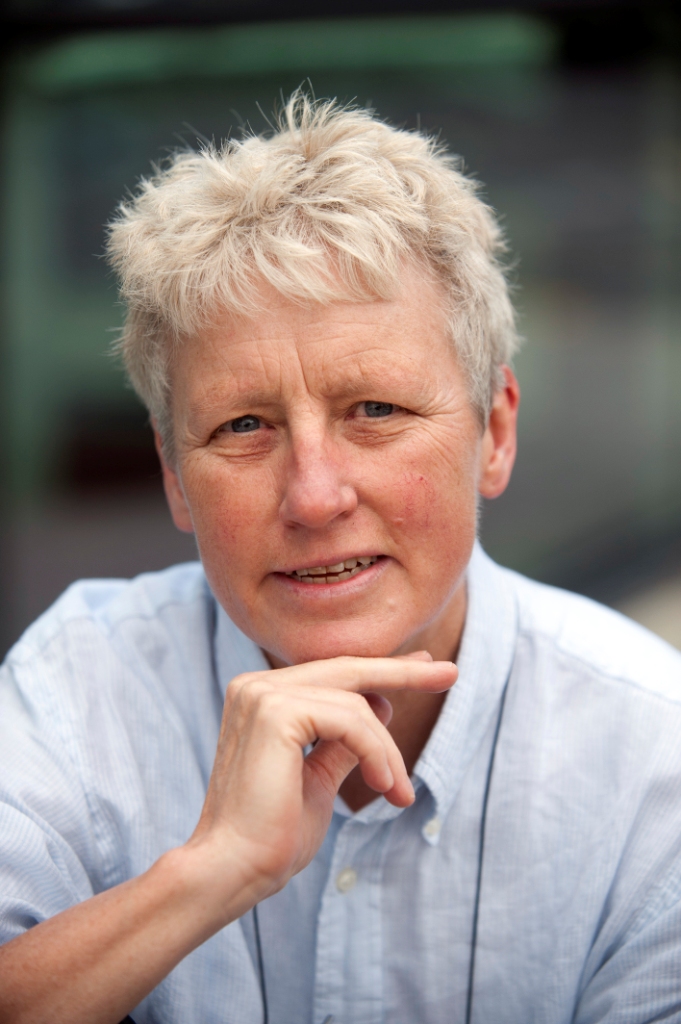Despite being a public health measure, face coverings remain a source of controversy and confusion for many people. Do they primarily protect the wearer or the people they come into contact with? What’s the correct face covering to wear? What about those for whom a face covering might not be suitable?
Professor Trisha Greenhalgh is a GP and Professor of Primary Care Health Sciences at the University of Oxford who co-authored a British Medical Journal paper on the protective effect of face coverings in public spaces. Trisha is therefore the perfect person to answer the persistent questions and separate fact from fiction.
What role does a face covering play in protecting those around us?
“It is complicated. Almost all of the research on medical masks has looked at whether the person wearing the mask is protected from being infected by other people. The classic example of that is a doctor wearing a mask that protects the doctor from catching whatever disease the patient has got. Masks for doctors and nurses are, primarily, to protect the health professional from being infected.
“We’ve got a completely different situation when it comes to ‘community face coverings’ because we’re trying to reduce the amount of virus that’s circulating in the community. The most effective way of doing that in terms of ‘masking’ is that if I wear a face covering it stops droplets coming out of my mouth and infecting someone else, and if someone else wears one it stops their droplets infecting me.
“There’s an important scientific reason for that, which is that if I’ve got the virus and it’s in my mouth, nose and chest, it tends to come out in the droplets. If you’ve got a cold or had flu, you’re sneezing and coughing away, which can leave your hand wet with droplets, teeming with virus. If you go a few feet away, what happens is that the droplets will evaporate, leaving much smaller droplets – what they call droplet nuclei or microdroplets – that you can’t see or feel, and are much harder to stop. It’s therefore much easier to stop the virus when it’s in the droplets right at the point it’s being coughed out, which is why people should wear a face covering.”

If you’ve got a reasonably thick, double layer of cotton it’s going to provide about 80-90% protection for other people, and probably about 30-40% protection for you.
What role does a face covering play for the wearer?
“It most certainly protects the wearer, though it doesn’t protect the wearer 100%. You can go round and round with the figures, and it depends on what the face covering is made of, but if you’ve got a reasonably thick, double layer of cotton it’s going to provide about 80-90% protection for other people, and about 30-40% protection for you.
“But there’s another factor that’s recently been discovered that we need to take account of: not just whether or not you’re at risk of catching the virus, but how badly affected you’re going to be if you do. If you’re wearing a face covering but are unlucky enough to still catch the virus, you won’t have as much virus getting into your body, so you’re likely to have a much milder form of COVID-19. So that’s another good reason for covering your face, as well as being socially responsible and protecting other people.”
What’s the best covering someone can use?
“If you were on the shielded list, you have an underlying illness like cancer, then I think you need to protect yourself at a very high grade, using some kind of medical mask. That is my recommendation, too, for anyone over the age of 60. On the other hand, for most people who are reasonably fit and well, even if you’re older, then I don’t think we should be overthinking face coverings.
- We all use handkerchiefs, but no one has ever sent an official size and recommendation for the size of those because, frankly, anything is better than nothing. Likewise with face coverings – sometimes we’ve been applying medical grade language when what we really need to do is use a different kind of language and just say: cover your face in a public place.
- The rule of thumb is that a double layer is better than a single layer.
- Two layers of different fabrics are better, because each fabric lets through different sized particles. For example – I made one the other day that was a hanky on the inside and a piece of old curtain on the outside.
- It’s got to fit you. A lot of people get very irritated about some people not wearing a covering over their nose, but to protect other people the main thing is to cover your mouth. To protect you, however, it’s better to cover your nose, as we breathe through our nose too.
- Ensure it’s snug at the sides. If you’ve got a nasty cough and you’re wearing your masks but it’s got gaps at the sides, you might give out a side ‘jet’ that catches some poor person nearby.”

We’ve been applying medical grade language when what we really need to do is use a different kind of language and just say: cover your face in a public place.
What conditions could someone have that might make a face covering unsuitable? What alternatives do they have?
“COPD, Chronic Obstructive Pulmonary Disease, is a very common condition in older people, particularly in those who are smokers or have been smokers in the past. COPD gives people a cough and wheeze that gets worse in the winter. I know lots of people with COPD and they are perfectly comfortable wearing a face covering. There may be those with the condition who feel too choked when they’re wearing a face covering, so that would be a reason for not wearing one.
“There’s no reason at all, however, why someone couldn’t give it a go. If you have COPD or asthma or a mental health condition like anxiety, it may be that if you put it on for a few minutes while at home you’ll get used to it. I’m pretty claustrophobic myself and when I first put a covering on I didn’t like it, but I put it on for a few minutes at a time to teach my brain not to be so worried. That worked for me.
“It won’t work for everyone, though, and the last thing you want if you’re unable to wear a face covering is people coming up to you and shaming you. There’s a really good medical reason why you shouldn’t confront people who aren’t wearing a face covering and the reason is: you’re most likely to catch COVID-19 from someone when they’re talking or shouting close to you.
“If you approach someone who isn’t wearing a mask, they will almost certainly reply to you, perhaps angrily and at full volume, which means you’ve exposed yourself to a possible burst of virus. Therefore, if you see someone who isn’t wearing a face covering, give them the benefit of the doubt – don’t confront them and don’t antagonise them because if they’re quiet and not shouting it’s better than if they are.
“Another major group of people who are going to find masking difficult will be the cognitively impaired. Obviously not everyone with memory loss of cognitive issues will have problems wearing a face covering, but many will. Give it a go, but if the person really can’t understand what’s happening or can’t accept it, don’t force it.”

Coronavirus hasn’t gone away, some people are highly contagious, and someone we meet when we go into a shop might be one of those people. We might be one of those people.
People are increasingly using the terms ‘k value’ and ‘superspreaders’ – what do we need to know about them?
“‘The ‘k number’ is a measure of variability, so some people are much more likely to spread the virus than others. But in a way that’s not going to help us because, in the end you’ve got to assume that everybody you meet might be a ‘spreader’ or a ‘superspreader’ – someone who spreads the virus to many other people – to err on the side of caution.
“The k number may be useful for research, but in terms of making decisions in our own everyday lives, all we need to know is that coronavirus hasn’t gone away, some people are highly contagious, and someone we meet when we go into a shop might be one of those people. It’s also worth remembering that we, too, might be one of those people.”
What locations and situations are best avoided?
“I think we should reserve the term ‘superspreader’ for situations rather than individuals. The situations associated with high levels of spread are indoors and involve shouting, singing, and praying, so those are situations to avoid, particularly when there’s a lack of ventilation. A bar, for example, with lots of people gathered around closely, with the windows closed, is a superspreading situation.
“If you want to go for a walk outside then you should, as the chances you're going to catch coronavirus are very small, particularly if you don't get too close to other people.”
Coronavirus information and advice
We've brought together information and advice about coronavirus – whether you want to know more about its symptoms, or are wondering how you can protect yourself and your loved ones.

